Not just the Two Towers
Updated on 04 May 2022 From Bologna Welcome
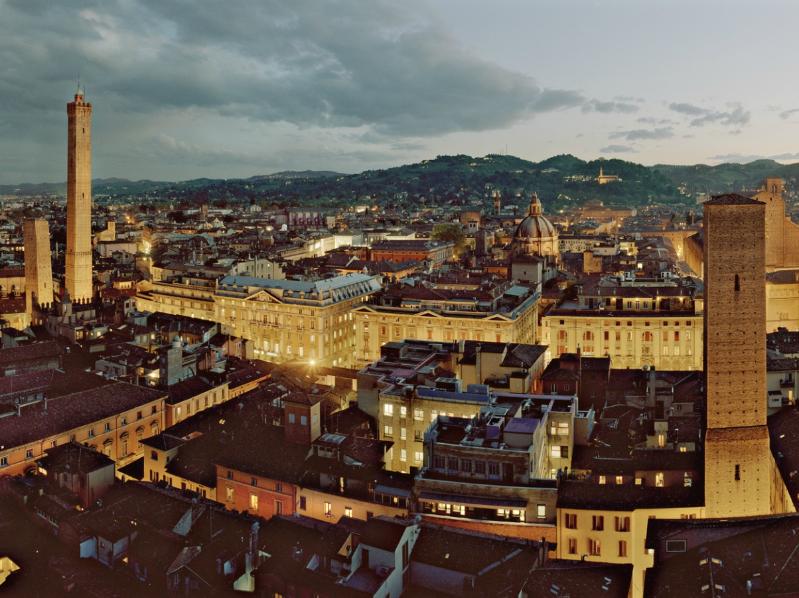
Accompanying us in this promenade...
Andrea Malossini, writer and journalist, has been working with Garzanti, Vallardi Editore, Rai 1 and Libri di Emil. A passionate lover of history and popular traditions, he has authored, among others, Manuale di Stregoneria ,I giochi dei bambini italiani, Superstizioni italiane and Le torri di Bologna.
The medieval towers, symbol of Bologna, came into being between the 11th and 13th centuries, during the Late Middle Ages when the Empire and the Church were battling for investiture and the Guelphs and Ghibellines were at war, represented in Bologna by Geremei and Lambertazzi families respectively. The first allegedly public towers are considered to have performed a defence and surveillance function. Their construction took place between the 11th and 12th century and was carried out by the imperial administration, represented in Bologna by Matilda of Tuscany a, a supporter of feudal power.
Following the demise of imperial influence, in the 12th century the towers passed into the hands of the wealthiest families (such as the Asinellis) and many others were built both at the behest of the Ghibelline nobles and the richest Guelphs, most of whom were of common origin. Originally conceived as a means of sighting and defence, the towers ended up becoming a symbol of power, used for both offence and defence. From the fourteenth century onwards, when the reasons for their construction gradually fell into oblivion, the towers lost their importance. No more towers were built, with the existing ones being cut down, demolished, incorporated into other buildings or reassigned to other uses. Only 22 survive today, few in number compared to the more than ninety towers that shaped Bologna's skyline during the 12th century.
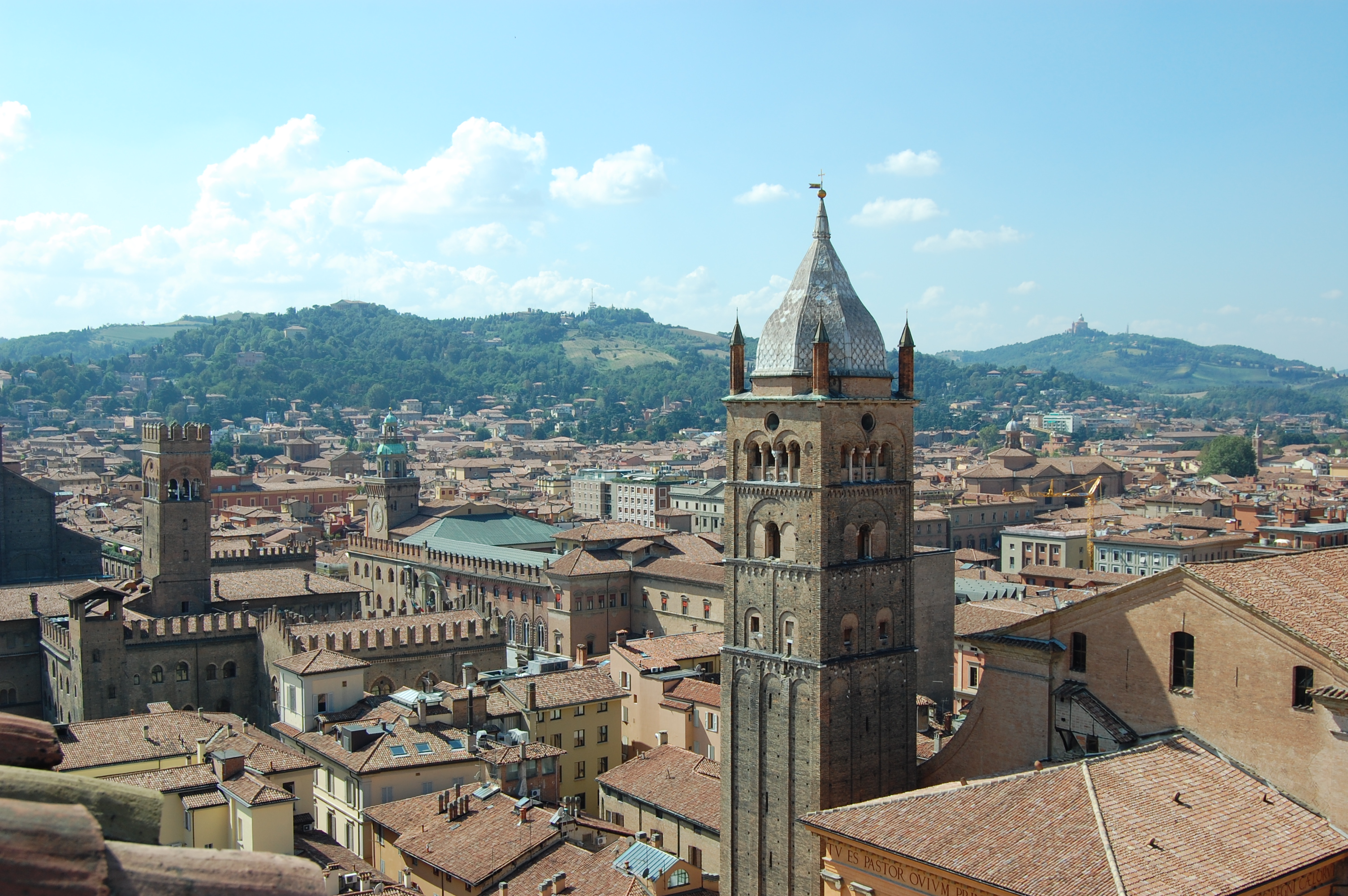
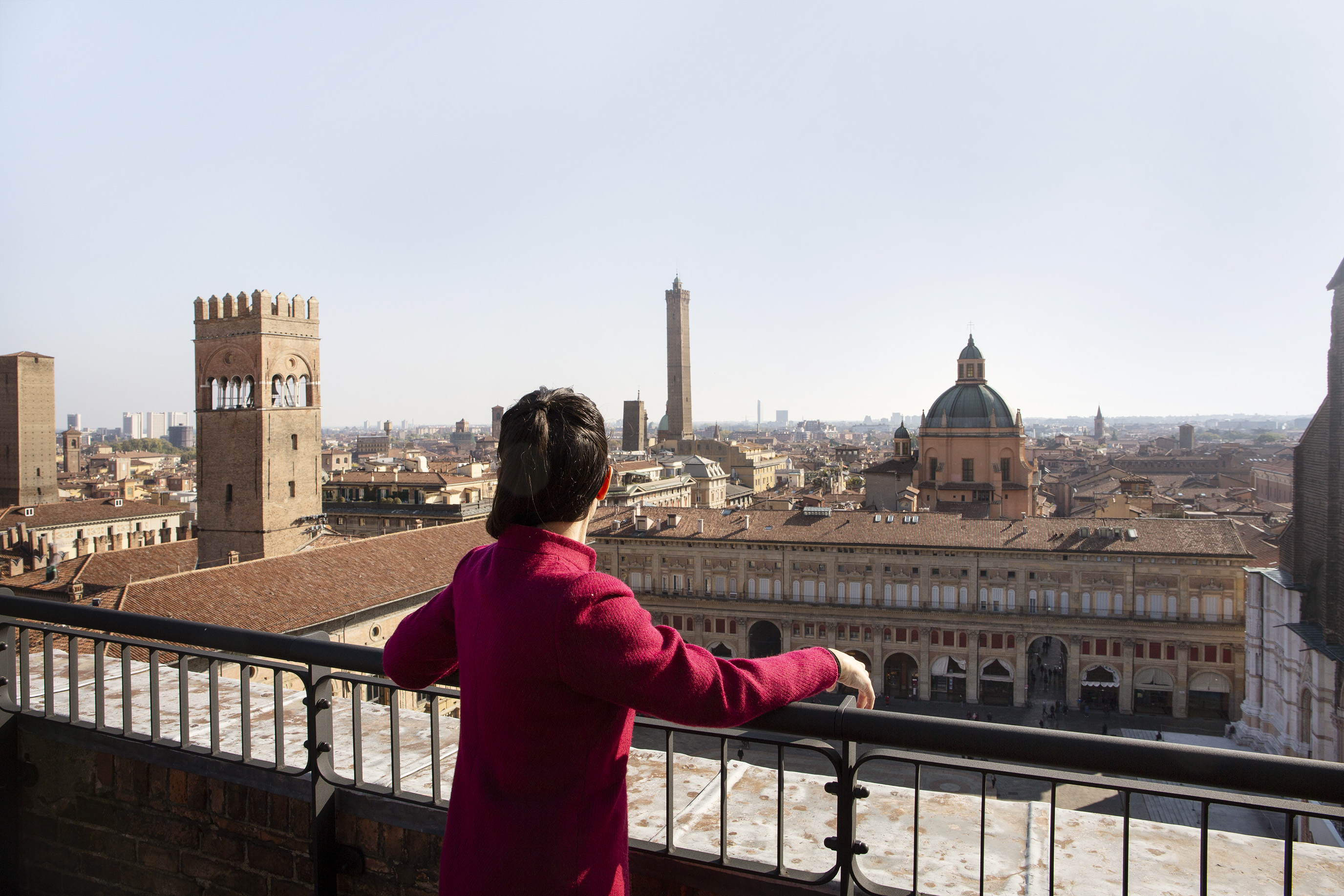
27 metres high, it was built by the Alberici, a powerful Ghibelline family of Lombard origin to whom Bologna owes many important jurists, including Ugo Alberico di Porta Ravegnana, one of the drafters of the 1158 Diet of Roncaglia, which laid down the "inalienable rights of the crown" in favour of Emperor Frederick Barbarossa.
Since 1273 the building has been the seat of Bologna's oldest trading post, housed within a space obtained by reducing the thickness of the walls (2.34 metres to 1.20 metres thick). Ever since, the tower base has always included a shop, from the famous silk retailers opened in the early 14th century by the Bolognini family, to the more recent cheese shop and the current restaurant. The present-day building is the result of restoration works carried out in 1926, when a masonry portico covering the base was removed. Noteworthy are the distinctive folding wooden shutter, a common feature of medieval shops, as well as the original entrance door, about six metres high, framed with selenite ashlars and crowned by a blind arch.
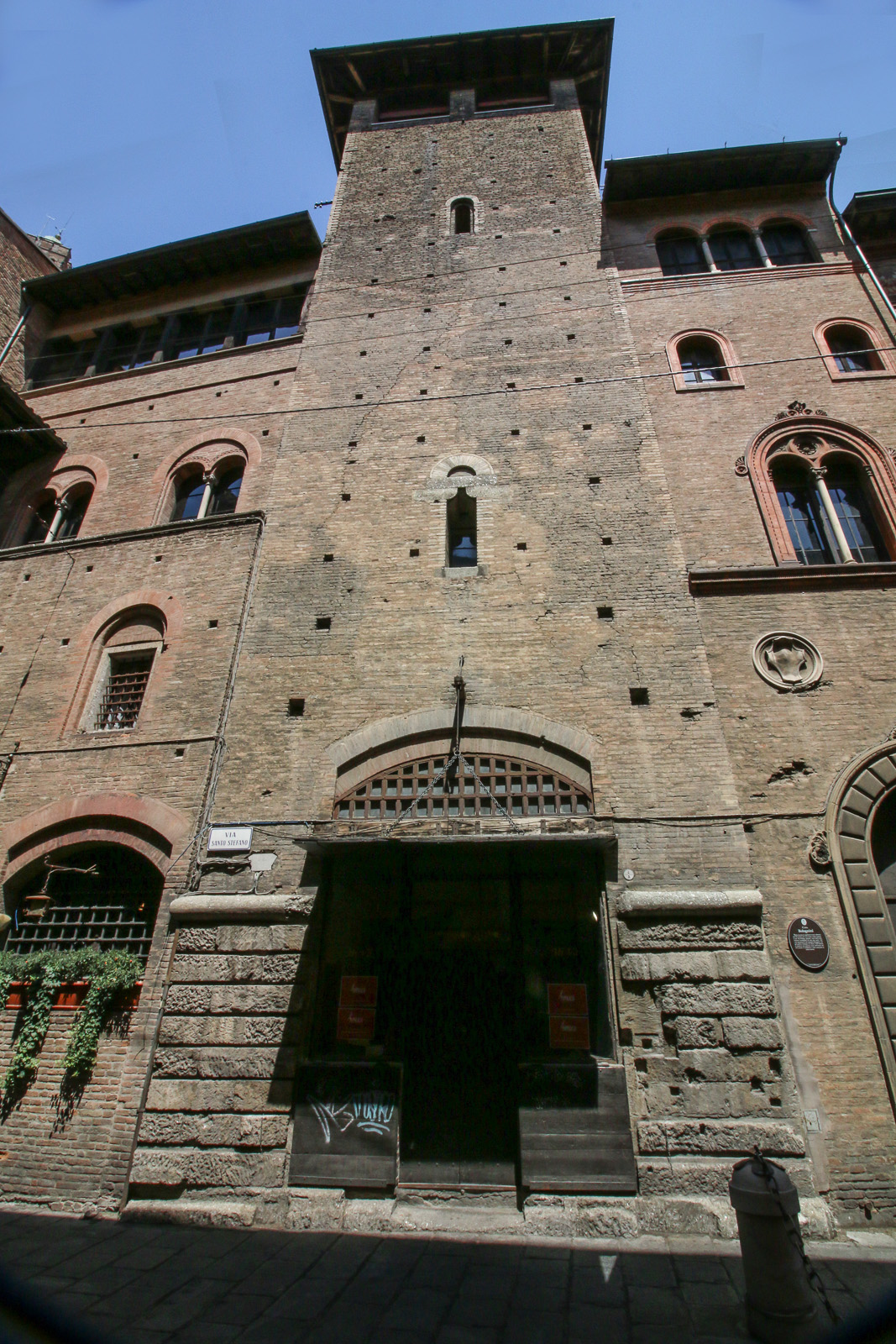
Photo by Andrea Malossini
This is the tallest original medieval tower in Italy (97.20 m) and one of the oldest, as it was probably built for defensive purposes by imperial will in the second half of the 11th century, and then took over by the Ghibelline family Asinelli since the beginning of the 12th century. Legend has it that the tower was built on the initiative of a young man who used to transport sand and gravel with his donkeys (in Italian "asinelli")(hence the family name).
Along with its neighbour Garisenda, albeit less leaning (2.25 metres overhanging), it'S the best-known symbol of Bologna. In 1398, a fire destroyed the internal wooden structure and partially melted the selenite walls at the base. To prevent similar mishaps, masonry stairs and a 30 metre high vault were added. Towards the middle of the 15th century, a battlemented fortress was also incorporated into the tower's base, serving as both a prison and a gallows for churchmen sentenced to death.
-> Currently not visitable due to maintenance in the area
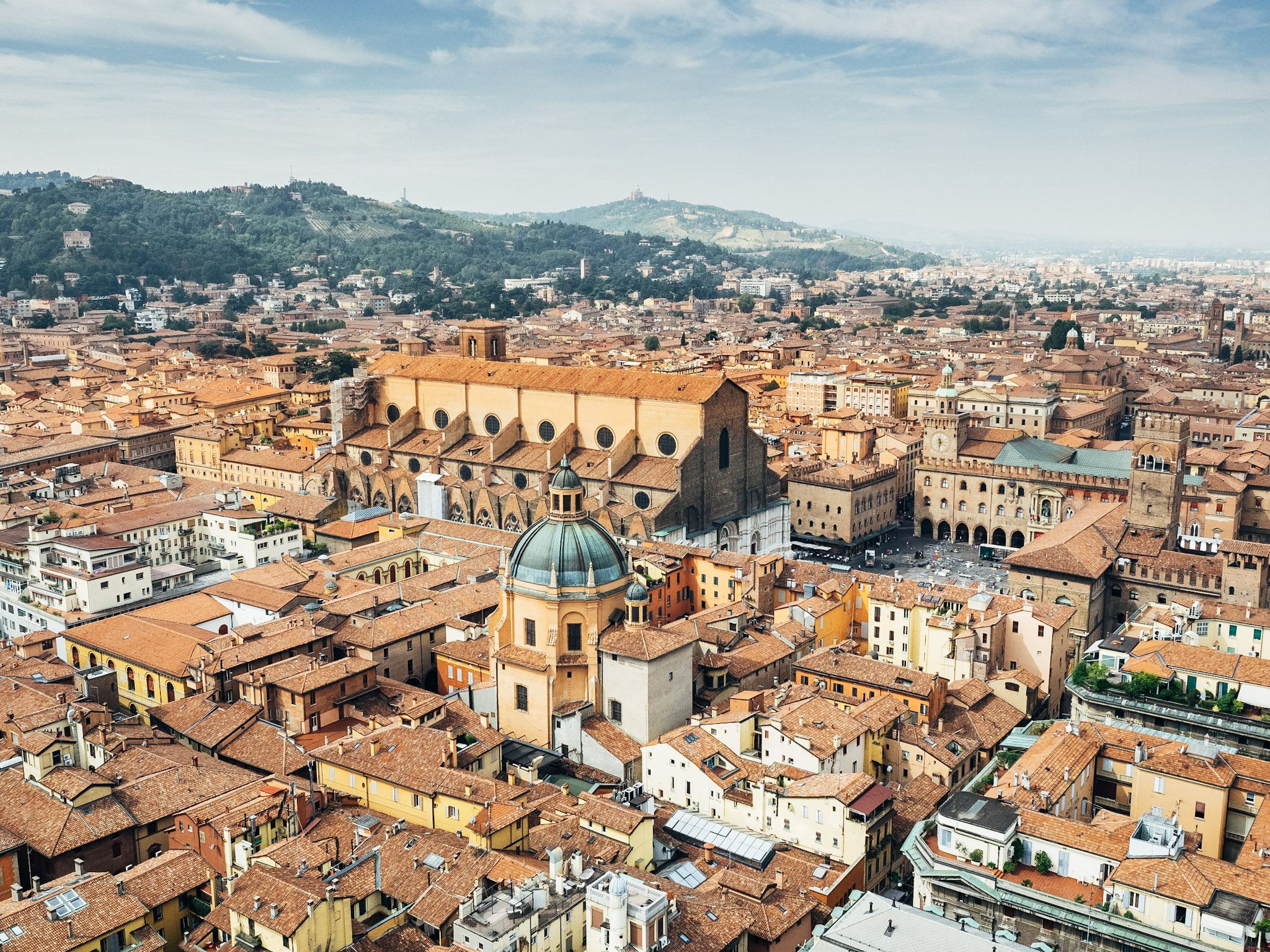
This is our own Leaning Tower, whose inclination of 4° (3.22 metres at the top) is a close second to that of Pisa (currently 3.97°). Standing 47.50 metres high today, it was built around 1100 and first owned by the Garisendi, a wealthy family of Ghibelline money changers.
It has been leaning ever since its foundation, as also recalled by Dante Alighieri and poetised about on two occasions: first in his sonnet on the Garisenda, dated 1287, when the poet was only 22 years old, and then in his most celebrated verses of the Divine Comedy (Inferno, XXXI), a canto commemorated in the plaque on the eastern side of the tower, where Dante compares the building to the giant Antaeus.
Originally about 60 metres high, the town council decided to pull it down in 1293 due to its steep inclination, and offered to acquire the property from the Garisendi family. However, after a year, as the municipality was unable to find the necessary funds, the idea of demolishing the tower was abandoned. In 1353 the despot Giovanni Visconti da Oleggio managed to cut it down by 12 metres, yet not to actually dismantle it.
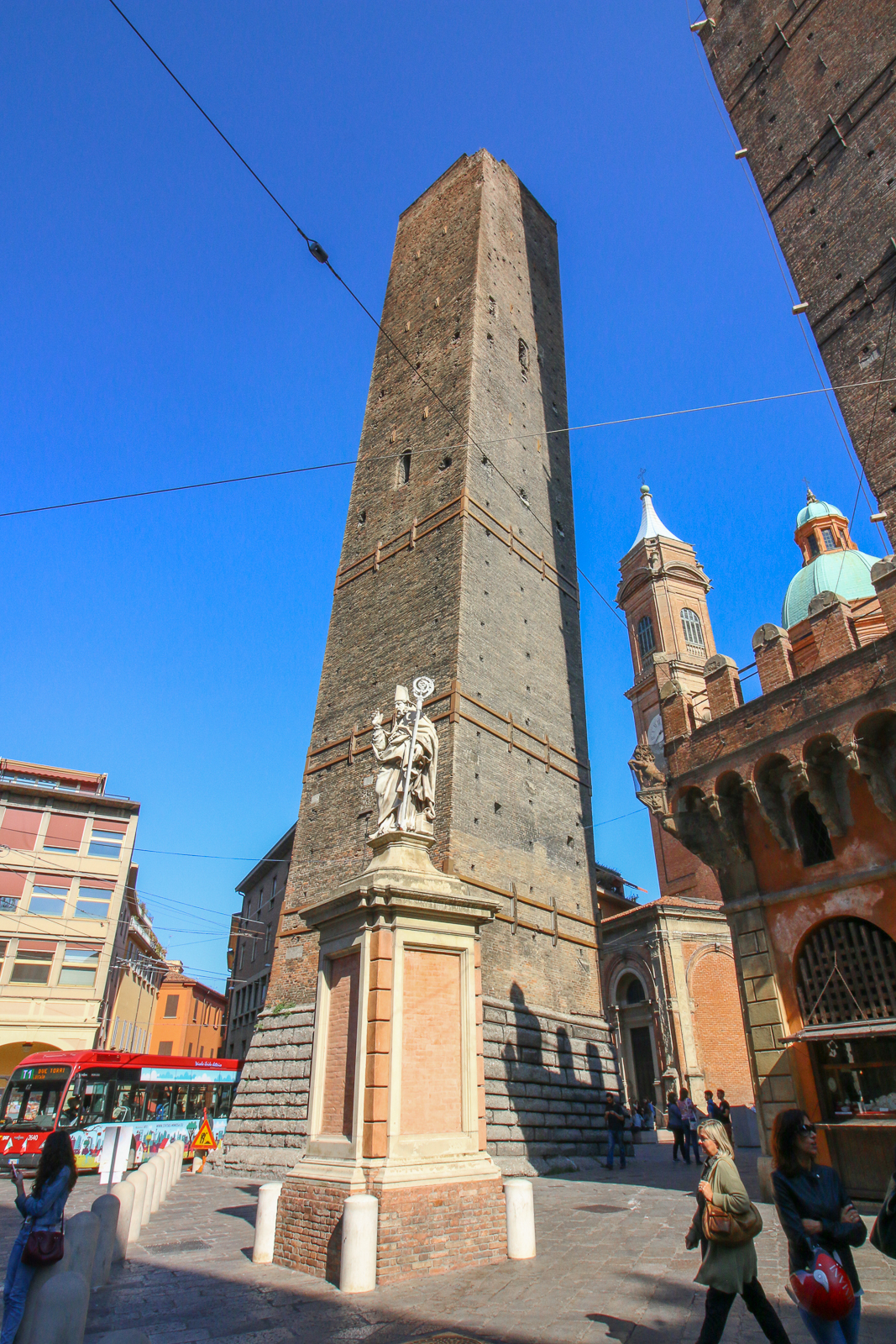
Photo by Andrea Malossini
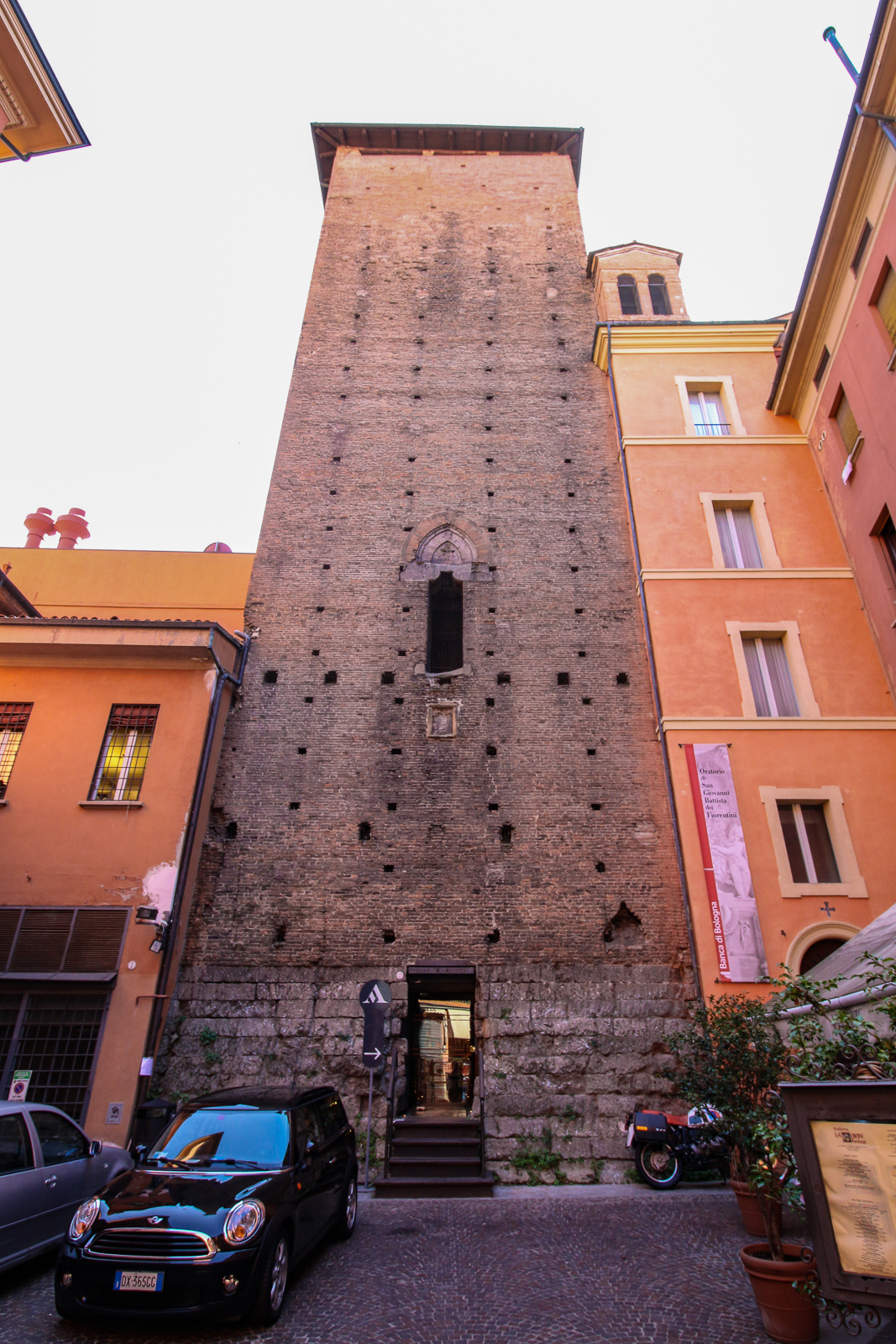
Photo by Andrea Malossini
Photo by Andrea Malossini
Lambertini Tower
25 metres high, it was commissioned by the Lambertinis between 1120 and 1142 and just a century later incorporated into Palazzo del Capitano del Popolo and the adjoining Palazzo Re Enzo, with its ancient origins as independent rampart thus being almost obscured. Among the most prominent figures hailing from the noble Guelph Lambertini family were Guido Lambertini (who contributed to the capture of King Enzo at Fossalta), and Cardinal Prospero Lambertini, ascended to the papal throne in 1174 with the name of Pope Benedict XIV, the protagonist of the eponymous play written by Alfredo Testoni in 1905.
After falling into the hands of the City Council in 1294, the tower was first turned into a women's prison in 1327 and subsequently equipped with Bologna's first public mechanical clock in 1356. Between 1903 and 1909, the tower was adapted by Alfonso Rubbiani to the neo-medieval style in vogue at the time (along with Palazzo Re Enzo and Palazzo del Podestà), with the addition of a roof terrace, windows and a balcony.
The restaurant located at the foot of the tower offers some intersting glimpses into the building's interior.
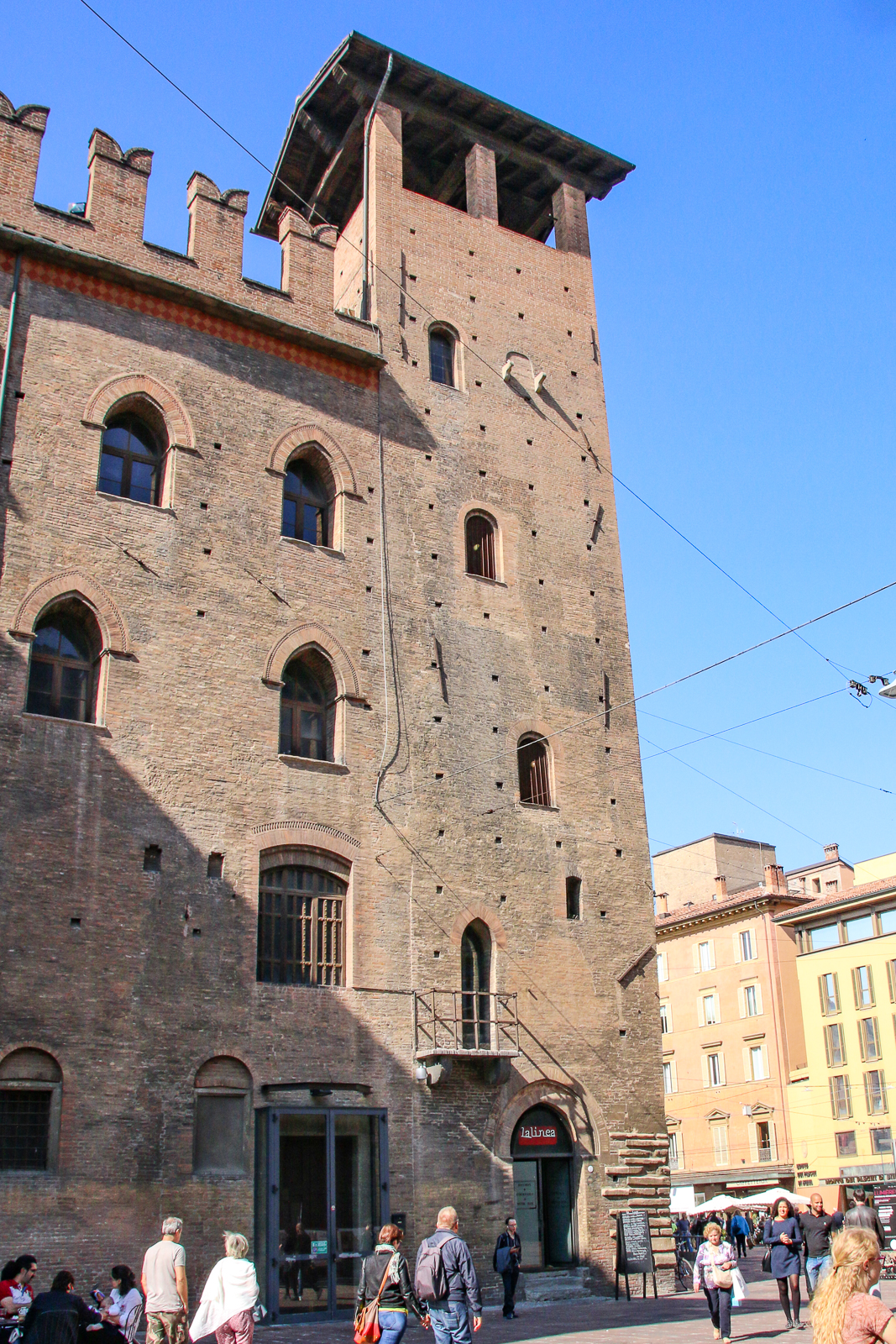
Photo by Andrea Malossini
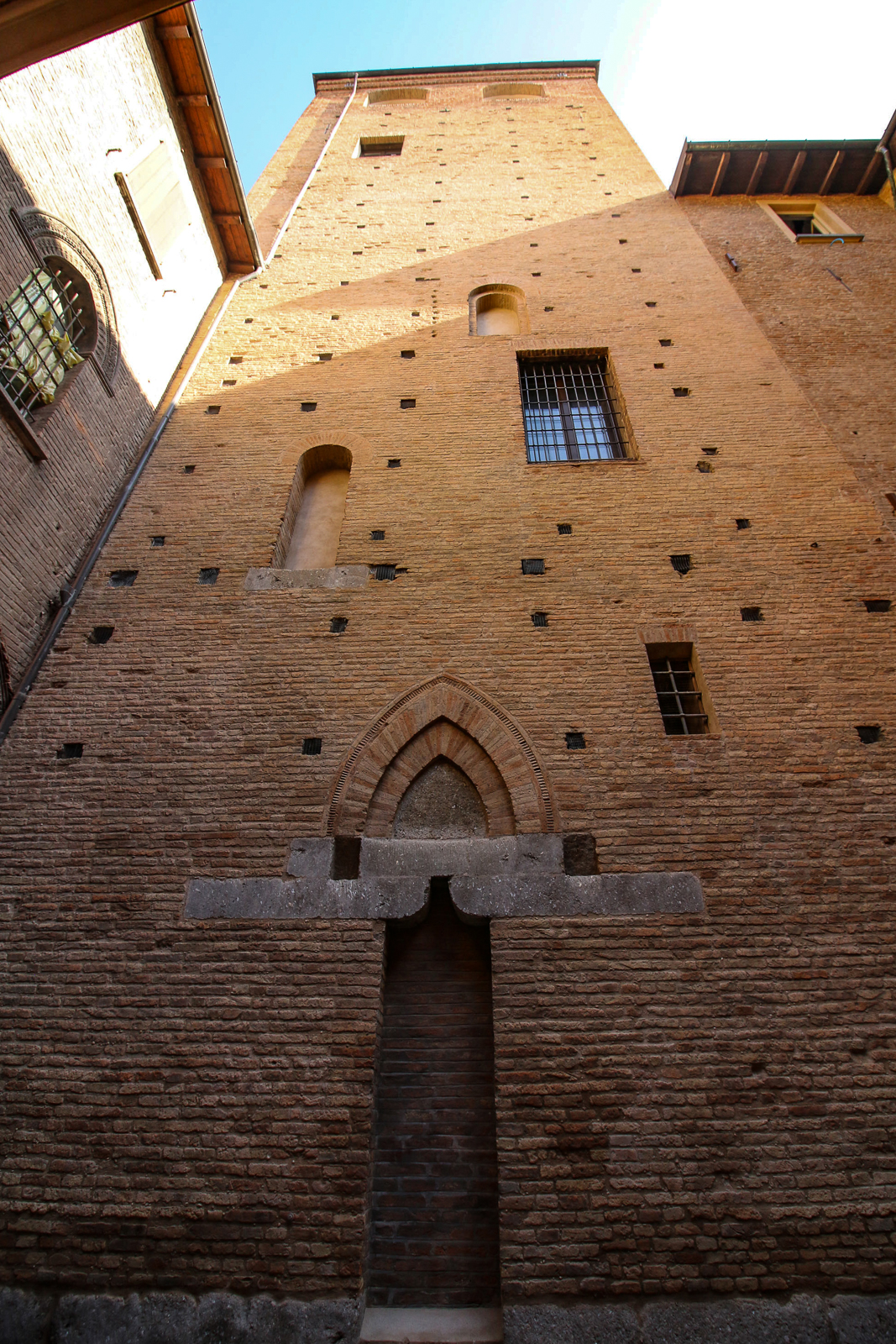
Photo by Andrea Malossini